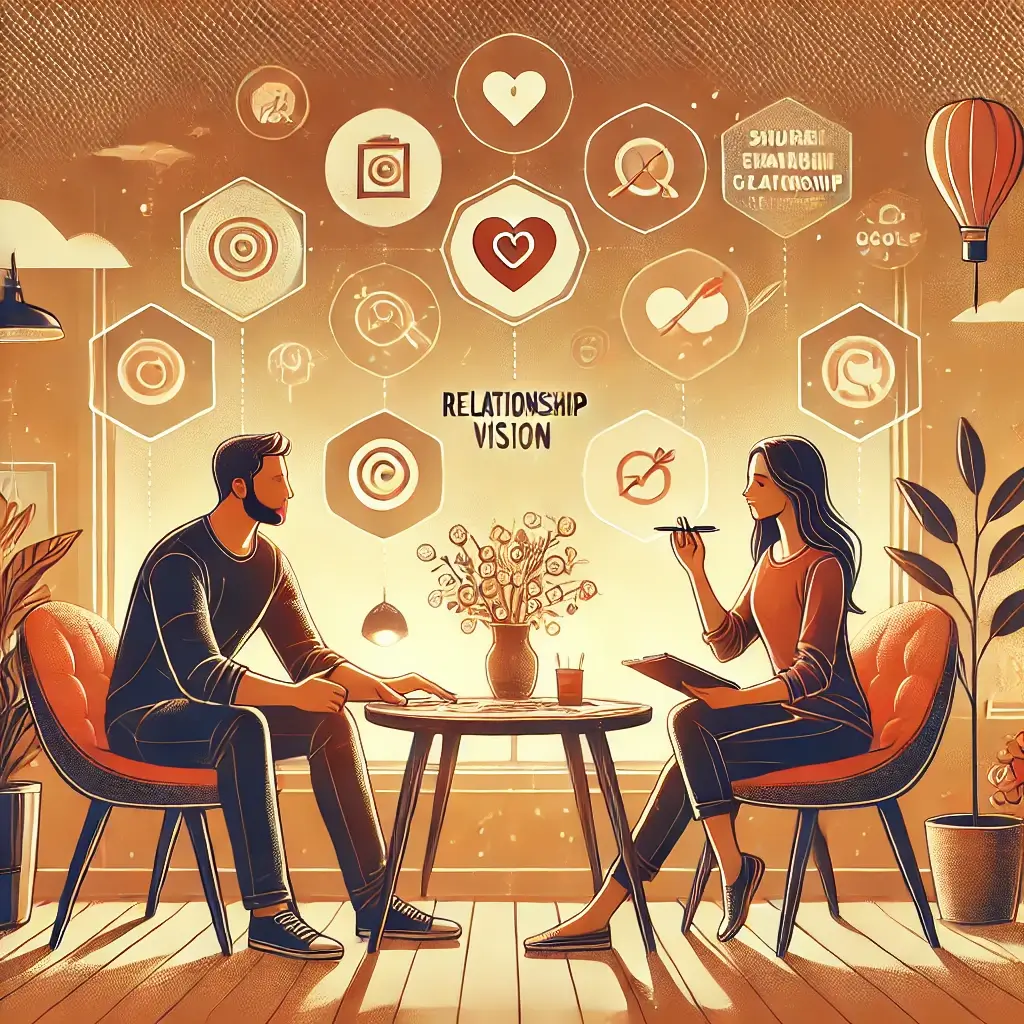The Essence of Relationship Dynamics
Every relationship is a dynamic blend of shared experiences, personal growth, and mutual aspirations. Building a thriving partnership requires a commitment to intentional development—not just as a couple but as individuals who bring unique strengths to the table. Crafting a long-term relationship plan—or relationship vision—helps foster clarity, balance, and a deeper connection between partners.
Growing Together vs. Being Together
This perspective shifts the focus from merely “being together” to “growing together.” Research underscores the importance of personal and relational alignment in creating strong, lasting partnerships. A 2020 study in the Journal of Social and Personal Relationships notes that couples who align personal and relational goals report greater satisfaction and a heightened sense of partnership. Additionally, relationships that prioritize both individual and shared aspirations tend to be more resilient and adaptive, allowing couples to navigate life’s inevitable changes with confidence and unity.
Balancing Individuality and Unity
This article explores how to develop a balanced relationship vision that celebrates individuality while fostering unity, ensuring a path of mutual growth and harmony.
Research-Backed Relationship Insights
Relevant Research and Perspectives
Aligning Personal and Relationship Goals
Personal and Relational Goals: Studies show that when partners prioritize both their own growth and their shared relationship goals, they experience higher fulfillment. A 2020 study found that aligning personal aspirations with relational priorities creates a foundation of respect and understanding (Journal of Social and Personal Relationships, 2020). This alignment strengthens the sense of partnership and minimizes potential conflicts.
The Impact of Shared Visualization
Visualizing Success Together: Visualization isn’t just for athletes. A 2019 study in Psychological Science highlights how couples who visualize their shared future are more likely to achieve mutual objectives and foster a sense of teamwork (Psychological Science, 2019). Visualization can also serve as a motivating force, helping partners stay focused on their shared aspirations.
Value Alignment in Relationships
The Power of Alignment: Dr. John Gottman’s extensive research reveals that when personal values align with a couple’s vision, it strengthens the relationship’s core and provides a roadmap for navigating life’s challenges (Gottman, 2018). Shared values act as an anchor, keeping couples grounded during turbulent times.
Planning for Emotional Security
Resilience through Planning: Dr. Sue Johnson’s Emotionally Focused Therapy emphasizes that planning for the future reduces uncertainty and increases emotional security, empowering couples to weather transitions together (Johnson, 2020). Effective planning helps partners feel supported and understood, fostering a sense of trust.
Creating Your Relationship Roadmap
Steps to Build a Relationship Vision
Starting with Personal Goals
Creating a relationship vision rooted in personal and relational growth involves a series of intentional actions:
Understanding Individual Aspirations
Reflect on Individual Aspirations: Begin by identifying personal goals. These could include professional ambitions, personal development objectives, or lifestyle preferences. Ask yourself:
What do I want to achieve in the next 5, 10, or 20 years?
How do my personal goals align with my partner’s?
What areas of personal growth will enhance my contribution to the relationship?
Embracing Individual Differences
Celebrate Individuality: Acknowledge that each partner’s individuality contributes to the relationship’s richness. Discuss how personal strengths can complement shared goals. Recognize that supporting each other’s growth is essential for a balanced partnership.
Communication as Foundation
Engage in Open Dialogue: Dedicate time to discuss your reflections with your partner. Practice active listening to ensure mutual understanding. Use open-ended questions to delve deeper into each other’s aspirations and concerns.
Finding Common Ground
Identify Overlapping Values: Highlight areas where personal and shared values intersect. Examples may include:
Commitment to personal growth through education or hobbies.
Shared priorities, such as financial planning or raising children.
Lifestyle aspirations, including travel or work-life balance.
Alignment on ethical beliefs, such as sustainability or community involvement.
Formulating Your Shared Vision
Draft a Shared Vision: Combine your reflections into a cohesive vision statement or actionable list of goals. Structure these into:
Short-term goals: Actions for the next 1-2 years, such as improving communication or exploring a new hobby together.
Medium-term goals: Plans for 3-5 years, like purchasing a home or starting a family.
Long-term aspirations: Dreams for a decade or more, such as retirement planning or building a shared legacy.
Maintaining Vision Relevance
Commit to Regular Check-Ins: Revisit your vision annually or during significant life changes. This ensures the vision evolves as you and your partner grow. Regular check-ins allow for adjustments and reaffirm the partnership’s commitment to growth.
The Power of Intentional Relationships
Conclusion
Empowerment Through Vision
Creating a relationship vision is an empowering exercise that combines personal development with relational harmony. By valuing both individuality and unity, couples can build a partnership rooted in mutual growth, resilience, and understanding. This intentional approach ensures not only a fulfilling relationship but also a deeper connection that evolves with time. Through shared planning and regular communication, partners can transform their relationship into a dynamic, adaptive bond that thrives on collaboration and mutual respect.
Academic References
References:
Journal of Social and Personal Relationships. (2020). The impact of aligned goals on relationship fulfillment.
Psychological Science. (2019). Visualization techniques and relational success.
Gottman, J. (2018). Aligning values for a stronger partnership.
Johnson, S. (2020). Emotional security and the power of relational planning.
